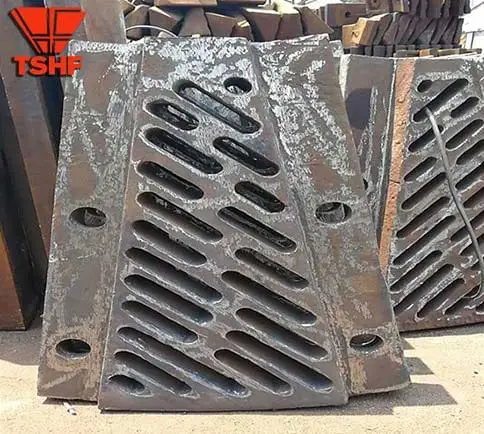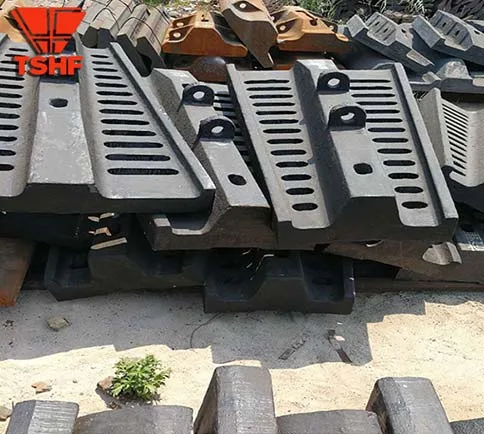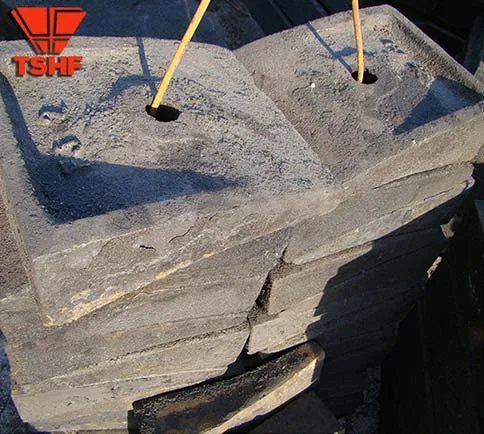Table of Contents
Introduction

In various industries, especially in the fields of material processing, mining, and manufacturing, the need to break down or grind raw materials into finer particles is essential. One of the most common machines used for this purpose is the ball mill. But what exactly is a ball mill, and why is it so essential in these industries? In this comprehensive guide, we will explore the ball mill’s design, working principle, applications, types, and much more. Whether you are a beginner or someone looking to deepen your understanding of industrial grinding processes, this blog will provide all the details you need to know about ball mills.
What Is a Ball Mill?
A ball mill is a type of grinding mill that is used to grind or blend materials into fine powder. It consists of a rotating cylindrical shell, partially filled with grinding media (typically steel balls or ceramic balls), that is used to grind the material. The mill works by tumbling the materials and the grinding media inside the shell, which results in the reduction of the material into finer particles. This process is essential in industries such as cement, mining, metallurgy, and chemical processing.
How Does a Ball Mill Work?
The basic working principle of a ball mill is straightforward. The mill is loaded with materials and grinding media. As the cylinder rotates, centrifugal force pushes the grinding media against the material, causing collisions that break down the material into smaller particles. The energy generated by these collisions is used to grind the raw materials into a fine powder.
Additionally, the rotation of the cylinder provides a continuous motion that keeps the grinding media moving and ensures efficient grinding. The size of the final particles can be controlled by adjusting factors such as the size of the grinding media, the speed of rotation, and the time spent in the mill.
Types of Ball Mills
Ball mills are used in different industries, and as a result, they come in various shapes and configurations. Understanding the different types of ball mills can help you determine which one is suitable for your application.
Horizontal Ball Mills
Horizontal ball mills are the most common type used for grinding materials in various industries. These mills are typically cylindrical in shape and rotate along the horizontal axis. They are commonly used in cement production, ore processing, and chemical manufacturing.
Vertical Ball Mills
Vertical ball mills are less common than horizontal mills, but they are still used in some applications. These mills are designed with the cylinder rotating along a vertical axis. They are commonly used in the food, pharmaceutical, and mining industries. Vertical mills often have higher energy efficiency compared to horizontal mills.
Overflow Ball Mills
Overflow ball mills are a type of horizontal ball mill that is specifically designed to allow materials to flow freely through the mill. This type of ball mill is ideal for applications where the material needs to be ground to a specific size and then discharged without clogging the system.
Grate Ball Mills
Grate ball mills are similar to overflow ball mills but with a difference in the discharge system. They are equipped with a grid or grate that controls the flow of material out of the mill. Grate mills are often used in applications where the material needs to be discharged in a controlled manner and where the grinding process is more intensive.
Mini Ball Mills
Mini ball mills are small-sized mills that are typically used in laboratory and pilot-scale applications. These mills are ideal for testing and research purposes due to their smaller size and ability to grind small batches of material.
Key Applications of Ball Mills


Ball mills are used in a wide range of applications across various industries. Their versatility and efficiency make them suitable for tasks such as grinding, blending, and mixing. Below are some of the most common applications of ball mills:
Cement Manufacturing
In the cement industry, ball mills are used for grinding raw materials (like limestone) and for finishing the grinding of cement. The ball mill helps achieve the fine particles required for cement production, ensuring the desired properties of the final product.
Mining and Mineral Processing
Ball mills are also extensively used in the mining industry to grind ore. The grinding process helps release valuable minerals from the ore, allowing them to be separated and processed. The ball mill is often the primary tool used for grinding gold, copper, iron, and other metals.
Pharmaceutical and Chemical Processing
In pharmaceutical and chemical manufacturing, ball mills are used to blend and grind materials. The fine grinding of active ingredients and excipients is necessary to produce uniform and effective products, such as tablets and coatings.
Food and Beverage Industry
Ball mills are used in the food industry for grinding ingredients such as cocoa, flour, and spices. They help achieve the desired consistency and texture required for food products. The ball mill also ensures that the particles are finely ground and uniform.
Paint and Coatings Industry
In the paint and coatings industry, ball mills are used for grinding pigments and other materials that are used to make paints. The mill helps achieve a uniform consistency and helps break down pigments into fine particles, which improves the quality of the finished product.
Factors Affecting the Efficiency of Ball Mills
Several factors can influence the efficiency of a ball mill and its ability to grind materials effectively. Understanding these factors can help you optimize the grinding process to achieve the desired results.
Grinding Media Size and Material
The size and material of the grinding media are crucial in determining the efficiency of the ball mill. Smaller balls provide finer grinding, while larger balls provide coarser grinding. The material of the balls also affects the grinding process. For example, ceramic balls may be used for materials that are prone to contamination, while steel balls are used for harder materials.
Speed of Rotation
The speed at which the ball mill rotates affects the grinding process. If the mill rotates too slowly, it may not generate enough impact force to break down the material. On the other hand, if the mill rotates too quickly, it may cause excessive wear and tear on the grinding media.
Filling Ratio
The filling ratio refers to the proportion of the ball mill that is filled with materials and grinding media. If the mill is too full, it may cause the materials to become compacted, resulting in inefficient grinding. If the mill is too empty, it may not generate enough impact force for effective grinding.
Duration of Grinding
The time the material spends inside the ball mill also affects the final particle size. Longer grinding times tend to result in finer particles. However, excessive grinding can also lead to excessive wear and potential overheating.
Material Properties
The hardness, density, and moisture content of the material being ground can also influence the performance of the ball mill. Harder materials require more energy to grind, while softer materials can be ground more easily.
Ball Mill Maintenance and Troubleshooting
To ensure the ball mill operates efficiently, regular maintenance is necessary. Below are some tips for maintaining and troubleshooting common issues with ball mills:
- Check for Wear: Inspect the grinding media and the mill lining for signs of wear. If the grinding media or lining is worn, it should be replaced to maintain efficient grinding.
- Lubrication: Ensure that the ball mill’s bearings are properly lubricated to reduce friction and prevent overheating.
- Monitor Vibration: Excessive vibration can indicate imbalances or other mechanical issues. Monitoring vibration levels can help identify potential problems before they cause significant damage.
- Cleaning: Regularly clean the mill to prevent buildup of material, which can affect the grinding process and lead to clogging or overheating.
Comparison of Ball Mills and Other Grinding Equipment

Here is a comparison between ball mills and other common types of grinding equipment:
| Feature/Equipment | Ball Mill | Vertical Roller Mill | Hammer Mill | Raymond Mill |
|---|---|---|---|---|
| Grinding Mechanism | Tumbling action | Compression and shear | Impact | Compression |
| Energy Consumption | High | Moderate | High | Moderate |
| Particle Size Range | Fine | Fine to very fine | Coarse to medium | Fine |
| Grinding Media | Steel or ceramic | No grinding media | Hammers | Grinding rings |
| Applications | Wide range | Cement, minerals | Coarse materials | Fine grinding |
As you can see, while ball mills are versatile and widely used, other grinding equipment such as vertical roller mills, hammer mills, and Raymond mills have their own advantages depending on the specific application.
Conclusion
Ball mills are essential tools in industries that require materials to be ground into fine powders. Their ability to handle a wide variety of materials, along with their efficiency in reducing particle size, makes them a valuable asset in mining, construction, and manufacturing sectors. By understanding the principles, types, and applications of ball mills, you can make more informed decisions about when and how to use them in your operations. If you need more information, please feel free to contact us.
FAQ
What is a ball mill used for?
A ball mill is used for grinding and blending materials in various industries, including mining, cement production, and pharmaceuticals. It helps break down solid materials into fine powders, making it essential for many manufacturing processes. If you’re wondering what is a ball mill and how it benefits industrial applications, it plays a key role in material refinement.
How does a ball mill work?
If you are asking what is a ball mill and how it functions, it operates by rotating a drum filled with grinding media, such as steel or ceramic balls. As the drum spins, the balls collide with the material inside, breaking it down into smaller particles. This process ensures efficient and uniform grinding.
What are the different types of ball mills?
Understanding what is a ball mill also means knowing its different types. There are several variations, including planetary ball mills, horizontal ball mills, and vertical ball mills. Each type is suited for specific applications, depending on grinding needs and material characteristics.
What factors should be considered when selecting a ball mill?
When choosing a ball mill, it’s important to consider the material being processed, the required particle size, and whether wet or dry grinding is needed. Knowing what is a ball mill and how to optimize its operation ensures better efficiency and productivity in industrial applications.
How can I maintain a ball mill for long-term use?
Proper maintenance is essential to keep a ball mill running efficiently. Regular lubrication, cleaning, and inspection of grinding media help prevent wear and improve performance. If you’re researching what is a ball mill and how to maintain it, keeping up with routine servicing is key to extending its lifespan.

